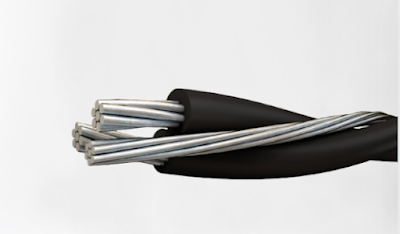Facts About Medium Voltage Cables You Need to Know
MV cables are the unsung heroes of electrical distribution, bridging the gap between high and low voltage systems. MV cables, which range in voltage from 1 kV to 69 kV, are critical for transporting power from substations to towns. Their multi-layered design incorporates conductors, insulation, and protective sheaths to ensure safe and efficient power transmission.
Because MV cables work under varied loads and climatic conditions, their manufacture necessitates accuracy and knowledge. Industries and urban infrastructure rely on MV cables for subterranean and overhead power distribution, connecting transformers, and supporting renewables. Because of the high voltage levels in MV cables, safety is always a priority. Proper insulation, grounding, and maintenance are required for safe operation.
Using a reputed electrical cable manufacturer ensures high-quality MV cables that meet international standards. As the importance of sustainability grows, businesses are looking into eco-friendly materials and cutting-edge manufacturing procedures. MV cables, in essence, empower contemporary living by consistently and securely providing energy while adapting to the ever-changing world of technology and sustainability.
Medium Voltage Cables (MV cables) are the unsung heroes of contemporary power distribution networks. While typically overlooked by their high and low voltage counterparts, these cables perform an important role in transporting power effectively and safely.
This post will go over some important MV cable information that everyone should be aware of.
1. Defining medium voltage cable:
Medium Voltage Cables (MV cables) are a type of electrical cable that can transfer energy at voltage levels ranging from 1 kV (1000 volts) to 69 kV. These cables connect power sources, such as substations, to distribution networks, providing a consistent supply of electricity to homes, companies, and industries.
2. Component and structure:
MV cables are made up of numerous layers that are designed to give best performance and protection. The core conducts the electrical current and is often constructed of copper or aluminium conductors. Insulation materials around the core, preventing leakage and electrical breakdown. Finally, an outer layer offers mechanical protection and defends against external influences.
3. Manufacturing expertise:
Manufacturing medium voltage cables necessitates a high level of precision and competence. Specialised equipment and methods are used to assure the constant quality and dependability of these cables. The insulating materials used are carefully selected to resist the electrical strains and climatic conditions they will face.
4. Diversity of Application:
MV cables are used in a variety of situations. They are used for subterranean and overhead power distribution, connecting transformers to switchgear, and connecting different components of power systems. Their adaptability makes them important for urban infrastructure, industrial complexes, and renewable energy installations.
5. Safety measures:
Because of the greater voltages they convey, working with MV cables requires extreme caution. Trained specialists follow stringent safety standards to avoid accidents and electrical risks. Proper insulation, grounding, and testing are essential for maintaining a safe working environment.
6. Supplier selection:
Choosing the correct electrical cable company is critical for receiving high-quality MV cables. Reputable electrical cable providers adhere to international norms and laws, guaranteeing that the cables fulfil demanding quality and safety criteria. Working with a reputable source ensures the lifespan and functionality of the cables in a variety of circumstances.
7. Sustainibility and future trends:
In recent years, the emphasis on sustainable energy solutions has expanded to cable production. Suppliers are investigating ecologically friendly insulating materials and more efficient manufacturing processes. The incorporation of digital technology, such as sensors for monitoring cable health and performance, is also on the horizon.
Finally, medium voltage cables are the unsung heroes of contemporary power distribution networks. Their role in effectively transporting power across diverse environments is critical. Understanding their composition, usage, safety precautions, and the need of finding a trustworthy provider is critical for ensuring a stable and secure power supply. As technology advances, so will these wires, suggesting a future where sustainability and innovation coexist. Medium voltage cables, whether underground, above, or hidden from view, continue to power the world as silent electrical heroes.
High Voltage MV Cable Manufacturers in Australia
Znergy Cable is a global MV cable supplier and manufacturer in Australia. With over a decade of experience, Znergy Cable has built a formidable reputation for creating high-quality HV cables that provide reliable and efficient power transfer over extended distances. The company's cutting-edge manufacturing facilities use advanced technologies and a highly skilled personnel to produce innovative solutions customised to the different needs of utility companies, industrial sectors, and renewable energy projects.
Znergy Cable's commitment to sustainability and environmentally friendly practises strengthens its position as an industry leader, driving the global shift to a greener and more sustainable future.



Comments
Post a Comment